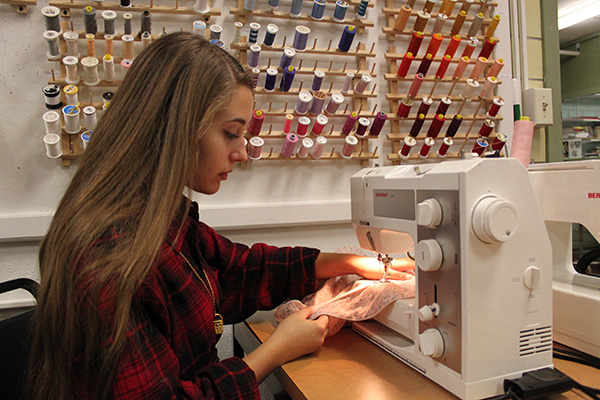
The rising cost of clothes can put college students on a spending freeze, so many have learned to avoid the chill by manufacturing their own garments. The process requires skill, patience and dedication, but it maintains — and in some cases, fills — a wallet.
“I started making my own clothes sophomore year of high school,” Rebecca Anapol, a first-year theater major with a concentration in costume design, said. “I was sick of all the clothes I found in regular stores so I started making my own. Clothes that were pretty and well-made were expensive, so I thought if I learned how to make clothes that were well-made, it could be more affordable and accessible.”
Anapol isn’t the only trendsetter. Costume shop manager Eleanor Wolfe said the costume storage room in the Theater Department is full of secondhand garments.
Considering department budget constraints, recycling clothing saves money and the environment, Wolfe said.
Buying garments from secondhand shops and altering a size or a style isn’t difficult when one has the resources and the knowledge.
Wolfe said she began making her own clothing when she was 9 since it was cheaper to buy a pattern than it is to buy fabrics.
She said she spent years after college professionally altering garments, working in university costume shops and eventually on Broadway.
Like Wolfe, students started manufacturing their own clothes as childhood hobbies, but continue as a money-saving, and for some, money-making technique.
“Junior year, I wore most of my clothes to school and people would ask me to make stuff and I would make my friends dresses for birthdays and Christmas,” Anapol said. “I even made a few prom dresses and Halloween costumes. It was cool making money off my talents.”
What began as a thrifty hobby has turned into a career path.
Anapol said she originally wanted to be a fashion designer, but instead chose to pursue theatrical costuming because she prefers everyone working together to put on a show rather than competing against each other for the sake of their own line.
Julia Fell, a third-year theater major with a concentration in costume design said she has been making her own clothes since she was young, but has “failed horribly” on certain projects because she was self-taught.
“Those [projects] are mostly from before I actually got to study costume design and proper construction techniques,” Fell said. “There are so many little tricks that you may have no idea about if you aren’t learning from professionals.”
Self-manufacturing their own clothes keeps students financially stable, but one underlying benefit, Anapol said, is that the process itself is humbling.
“Everything that goes into putting a garment together is an experience. In today’s world, with sweatshops and everything, people don’t know where their clothes come from,” Anapol said. “Making your own clothes, you know exactly what’s going into the garment and what you wear.”

